
For years I had firmly fixed in my imagination what the American West should look like. Formed in part by books, movies and TV shows, I wanted more than anything to experience that almost mythical landscape for myself. To be out in the no man’s land of a vast untamed wilderness and to stand in awe of nature’s true might. The problem is, I couldn’t find it. I tried, I took trips out to Nevada, nothing. I thought for sure I’d see it on Route 66 but, while close, it wasn’t exactly what I had hoped to see. No, it wasn’t until I finally visited the outdoor paradise that is Utah that I finally found the landscapes I had always wanted to see when I visited the Mighty 5 National Parks.
Arches, Canyonlands, Capitol Reef, Bryce Canyon, Zion: although they’re all within an easy drive of one another and every one offers a different interpretation of the Colorado Plateau, each of these majestic parks has its own very unique personality and incredible landscapes. A few months ago I had the great opportunity to visit the Mighty 5 National Parks, part of a project with Marriott International, The Americas who asked me to share parts of the country that I love most. Even though it was my first trip to these parks, I knew I would love the experience, I just didn’t know how much. I’ve already written guides to each of these parks, which you can find linked to below, but in this post I want to share the highlights of each National Park, offer some practical advice and hopefully encourage you to explore them for yourself.
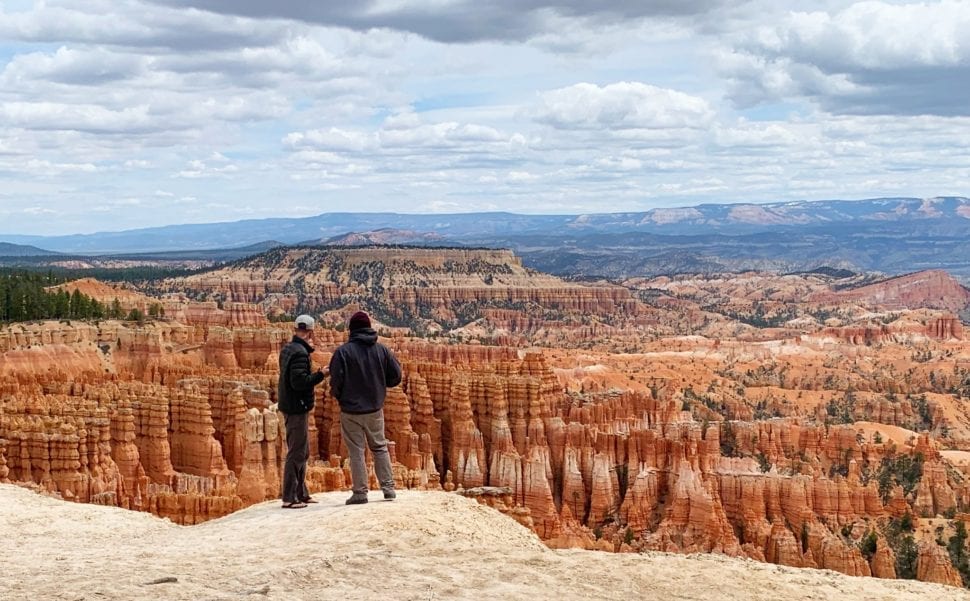
Guides
Travel Guide to Utah’s National Parks

Arches National Park
Arches was first designated a National Monument in 1929 and then a Park in 1971; the massive 76,000 acre site recognized for the more than 2,000 sandstone arches that grace its lands. The most famous, Delicate Arch, even adorns the Utah license plate and driving to the park itself it’s hard not to be enthralled by the natural beauty of the region. Arches National Park though is about so much more than its namesake geology, there also exists around the park enormous formations that look like the handiwork of the gods. Spires, balanced rocks, sandstone fins, and eroded monoliths are all strewn about the landscape, creating a red rock diorama that looks more like Mars than anywhere on Earth.

Getting Around
According to the rangers at Arches, if you have three hours your can complete the entire driving loop, spending ten minutes at each viewpoint. And, to be honest, if you’ve made the trek to Arches in the first place I can’t imagine spending less time than that. One thing to keep in mind is that Arches is a very popular park, much more so than nearby Canyonlands so you will have traffic to deal with in the park itself and you’ll also need to be patient when it comes time to park your car at each viewpoint.
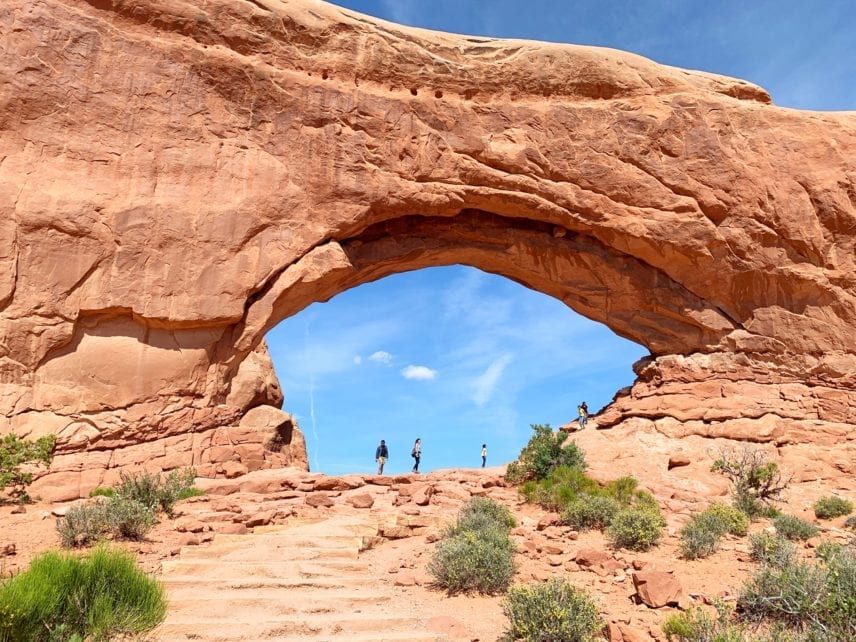
Highlights
- Park Avenue and Courthouse Towers: This is the first section of the park that all visitors see when driving in and, for me at least, it’s one of the most remarkable. Visitors can walk among the massive monoliths and towering walls to see views of the nearby La Sal Mountains.
- The Windows Section: Considered by many to be the heart of the park, here you’ll find a large concentration of arches and it is one of the most scenic locations in the park.
- Delicate Arch: The park’s most famous formation, it’s what all visitors want to see. Getting there though can be more of a challenge. There are two viewpoints for the arch, one requires no hiking and the other is a moderate hike. If you want to reach the arch itself though, you have to be prepared. It’s 3-miles round-trip and takes between 2-3 hours to do.

Where to Stay
SpringHill Suites Moab: This was one of my favorite hotels of the trip, thanks in large part to how expertly they’ve brought the natural elements into the hotel experience. Set among the region’s famous red rocks, every room enjoys stunning views at this new 99-suite hotel. It’s that suite experience that always makes SpringHill a great option for me; I love having the extra space to spread out and just relax after a long day of exploration. Add in complimentary breakfast and one of the closest locations to both Arches and Canyonlands and you have a hotel experience that is hard to beat.
Fairfield Inn & Suites Moab: Located next door to the SpringHill Suites, the Fairfield enjoys the same stunning location and access to the parks, as well as shared amenities like the large and inviting pool. Also like their sister hotel, the Fairfield has thankfully fully embraced its location, making the experience feel unique and bespoke. Add in amazing views of the red rocks and the Colorado River below and you have another incredible hotel to call home for a few days.

Canyonlands National Park
What I love about Canyonlands is how primitive and raw it feels. This is unadulterated backcountry in its purest form and to experience it, if only briefly, is a true joy. The Island in the Sky Mesa rests on sandstone cliffs more than 1,000 feet above the surrounding desert terrain. That means the scenes from the various overlooks provide views that are constantly changing and totally unique. If you only have a few hours, Island in the Sky is the easiest section to visit and there are many great spots and even short hikes to enjoy. Just keep in mind that the entrance to the park is about 25 minutes from the main road and there’s a fantastic state park along the way (Dead Horse Point), so give yourself plenty of time to enjoy the area.

Getting Around
I toured the entire mesa top on the 34-mile round-trip scenic drive, stopping all the time at overlooks and even to tackle short hikes. From my own experience, the drive is easy to follow, wasn’t too busy and of course features some incredible spots.
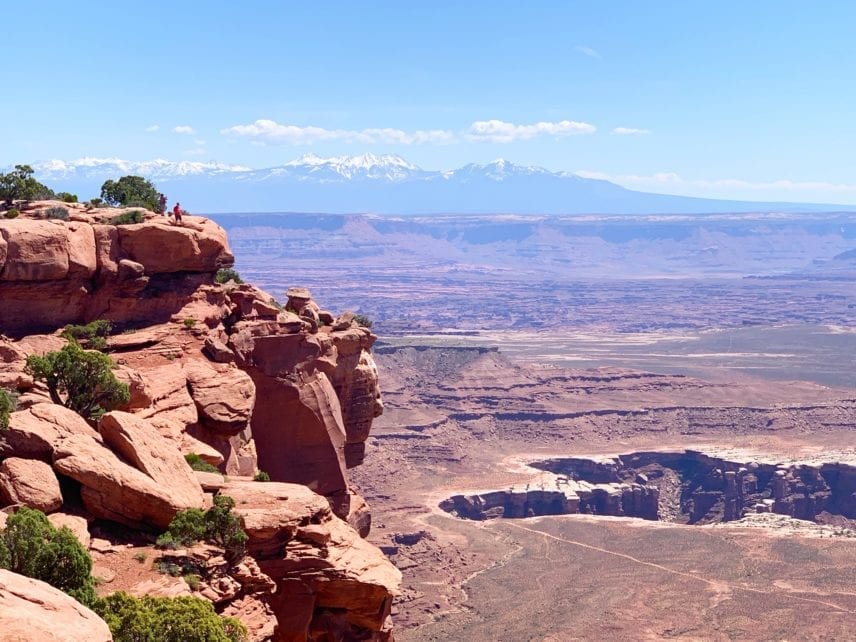
Highlights
- Mesa Arch: One of the Park’s most recognizable sights, it’s also a very easy 0.5-mile hike to reach. This cliff-edge arch has stunning views towards the La Sal Mountains and is perfect at sunrise.
- Shafer Canyon Overlook: I almost drove past this viewpoint, but I’m so glad I stopped. The overlook isn’t as popular as some of the others, which means you can usually have a fairly private experience. Like many of the other overlooks, it perfectly encapsulates the many geological features that make Canyonlands so very special.
- Grand View Point: This is one of those “mandatory” stops that all visitors to Canyonlands include, and with good reason. It’s usually one of the last stops for people driving the scenic route and from here you can see the White Rim, mountains and features in both the Maze and Needles sections of the park. Throughout the day rangers give geology talks and there’s even a moderate hike that takes you an additional mile to another viewpoint. It’s a great capstone to a wonderful day spent exploring the Park.
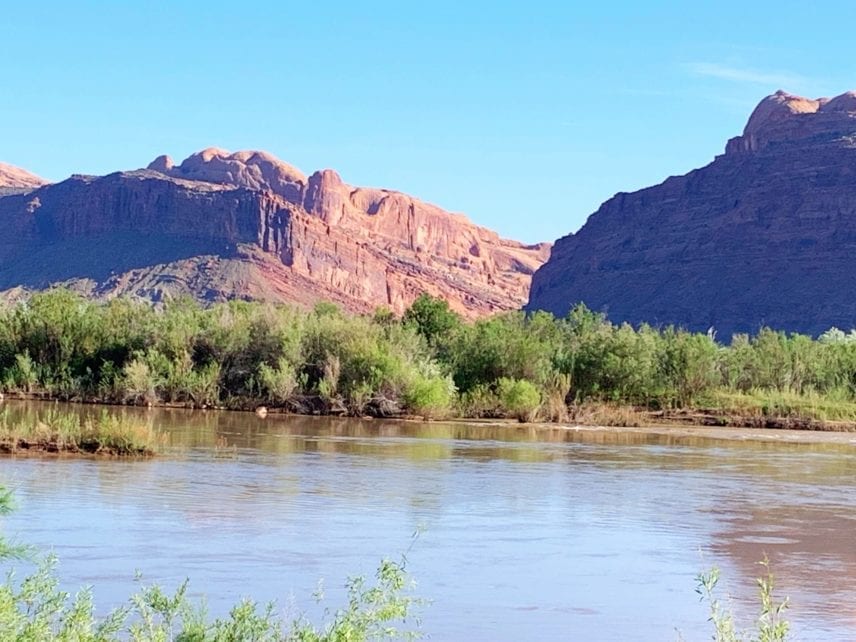
Where to Stay
SpringHill Suites Moab: Arches and Canyonlands are both in close proximity to each other and Moab, so I spent a couple of nights in town and explored both parks. As I mentioned before, I loved this property thanks to the suite experience. With large rooms and complimentary breakfast, this is a great option for your time in the region.
Fairfield Inn & Suites Moab: Located next door to the SpringHill Suites, the Fairfield enjoys the same stunning location and access to the parks, as well as shared amenities like the large and inviting pool. Also like their sister hotel, the Fairfield has thankfully fully embraced its location, making the experience feel unique and bespoke. Add in amazing views of the red rocks and the Colorado River below and you have another incredible hotel to call home for a few days.
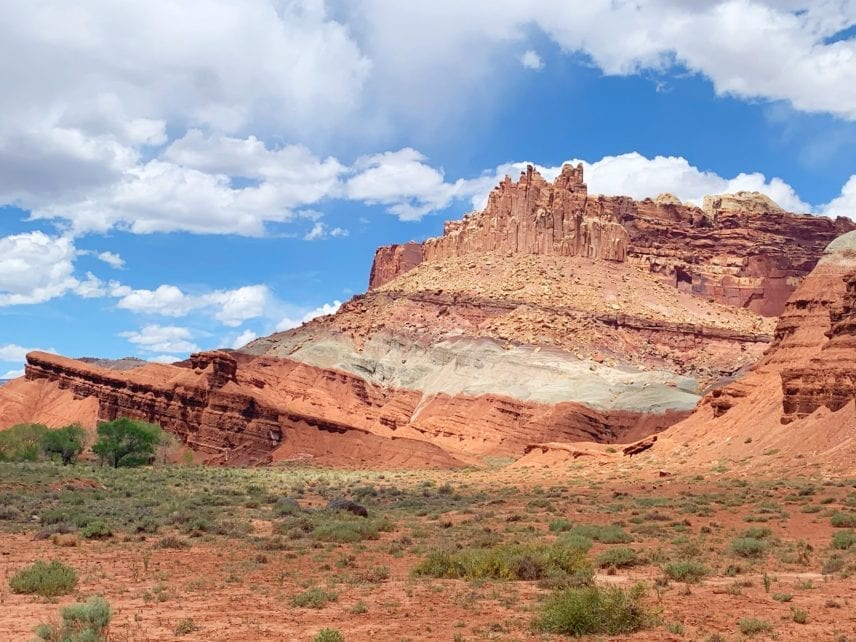
Capitol Reef National Park
Located in south-central Utah in the heart of red rock country, Capitol Reef National Park is an unappreciated treasure full of cliffs, canyons and domes all within the Waterpocket Fold – a geologic monocline that extends for nearly 100 miles. Capitol Reef became a national monument in 1937, conserving and protecting significant natural and cultural resources. The boundaries were later changed, and Capitol Reef became a National Park in 1971. Today the Park encompasses 381 square miles and in addition to its geological peculiarities also includes archeological evidence of prehistoric American Indians and elements of a historic Mormon settlement that are preserved as well.
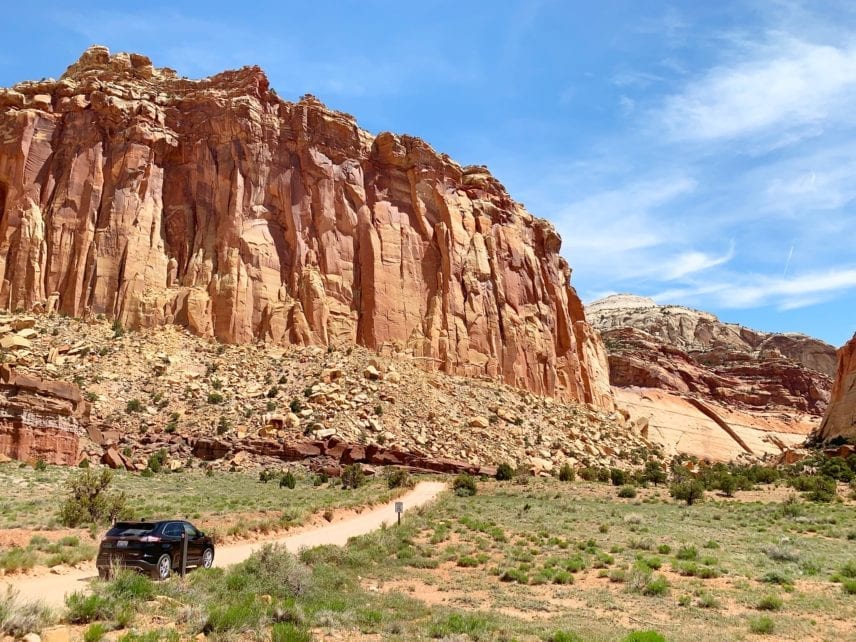
Getting Around
The Scenic Drive in Capitol Reef takes about 90 minutes round trip and is a great way to experience the best of the park if time is an issue. There are 11 official stops and together do a great job of sharing the history of the park. Rather than share all 11 stops, I do want included some of the highlights. The Moenkopi Formation is an example of the strange structures created by the layered, sedimentary rock that is so common in Capitol Reef. The Grand Wash spur road is a narrow, steep-walled canyon that is prone to flash flooding, but is also beautifully different from the other landscapes you’ll see. The Capitol Gorge spur road is a little daunting, but the unpaved drive takes you into the middle of some incredible scenery. Sheer cliffs and towering walls define the drive, which ends in an area with some great day hikes.

Highlights
- Gifford Homestead: Immediately before the start of the Scenic Drive is a fun place to stop, grab a bite to eat and enjoy the bucolic and green landscapes that are so different from the rest of the Park. The Gifford farm lies in the heart of the Fruita Valley, a desert oasis and part of the 200-acre Fruita Rural Historical District. The farm has been renovated as a cultural demonstration site to interpret the early Mormon settlement of the Fruita Valley. The house shares the typically spartan nature of these farm homes, but is also an active place to visit. Today you can buy a variety of gifts, but the most popular items are the locally baked fruit pies and homemade ice cream that aren’t to be missed and make for the ideal snack.
- Hiking: There are more than 140 miles of roads in and around the Park and over 150 miles of hiking trails for all ability levels. Many day hikes start along Utah Highway 25 and the Scenic Drive, making them easy to access if you’re only in the park for the day. If you want a longer adventure, be sure to do your research and check with the on-site rangers to see about current conditions and safety.
- Random Explorations: Other than the scenic drive, I enjoyed driving around the various roads in the park, stopping at whatever happened to catch my eye. Sometimes this meant manmade attractions like the old Fruita Schoolhouse, but most of the time it was to admire strange looking rock formations or to undertake short walks from the main road. Capitol Reef is so much more accessible than many other parks, making it a true joy to explore.

Where to Stay
Fairfield Inn & Suites Richfield: I decided to spend the night in Richfield, Utah since it was just an hour from Capitol Reef and set me up pretty well to visit Bryce Canyon National Park the next day. Richfield is a good-sized community which means there were plenty of options for dinner and even big box stores to pick up supplies. My hotel for the evening, the Fairfield Inn & Suites Richfield, couldn’t have been better for my needs. Warmly greeted, the hotel looks new and updated and my room was enormous; more than enough space to spread out and relax. After a long day of driving and exploring national parks, in the evenings all I wanted to do was decompress and get some work done in peace and quiet. There was a great restaurant next door to the hotel, but there are many others less than a 5-minutes drive from the Fairfield. I loved this spot along the Mighty Five route since it was convenient and didn’t force me to go out of my way.

Bryce Canyon National Park
More than 2 million people visit Bryce Canyon every year; far fewer than Zion or the Grand Canyon, but still a significant number. They’re in the park to experience the otherworldly feel of the region and given the fact that it’s somewhat remote, spend at least a day exploring Bryce Canyon. It’s not actually a single canyon though, it’s a series of natural amphitheaters carved into the edge of a high plateau. Inside these geological bowls are any number of incredible rock formations, including hundreds of hoodoos. There’s more to the park than just one viewing spot though, as I learned during my own exploration of this incredible part of the country.

Getting Around
Bryce Canyon provides a complimentary shuttle system to some of the most popular spots in the park and I think it’s the best way to start the trip. Unlike Zion, which has a mandatory shuttle system, you can also self-drive but the parking lots are small at the viewpoints and the park does get busy, so the shuttle is just easier. It also runs on a regular schedule and I never had to wait for more than a few minutes.
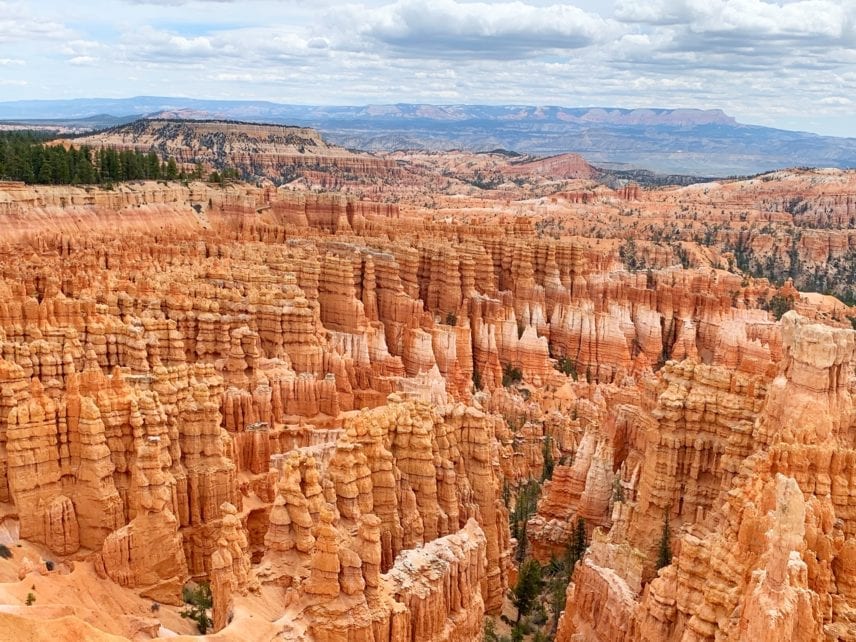
Highlights
- Bryce Amphitheater: Start with the most recognizable part of the park, Bryce Amphitheater. There are many different ways to experience the amphitheater, including an easy hike between the most famous viewpoints. Take the shuttle to Bryce Point and from there hike the easy Rim Trail for three miles to Inspiration, Sunset and Sunrise Points. You’ll see the canyon from a variety of different angles and gain a much deeper appreciation for its inherent beauty. If you’re feeling a little more adventurous, you can also hike down into the canyon itself to admire the hoodoos from a very up close and personal perspective.
- Scenic Drive: There’s much more to Bryce Canyon though than just the amphitheater. Be sure to drive the entire length of the main park road, about 18 miles that ends at the Park’s highest elevations at Rainbow and Yovimpa Points. There’s also an easy 1-mile Bristlecone Loop which is a fun walk. Along the way there are several viewpoints to stop, stretch your legs and admire the incredible scenery.
- Day Hikes: Other than the Bristlecone and Rim Trails, there are many other fun day hikes if you have the time and inclination. Mossy Cave Trail is located right outside of the amphitheater and is a streamside walk up to a mossy overhang and small waterfall. It’s also less than a mile round trip and very manageable for just about anyone. If you’re looking for an easy way into the canyon, then the Queens Garden Trail is the one for you. It’s 1.8 miles round-trip and is widely considered to be the least difficult route into the heart of this gorgeous natural wonder.

Where to Stay
Fairfield Inn & Suites Richfield: As I mentioned, Richfield was my home base as I transitioned from one park to the next and I had a great experience at this property. Richfield is a good-sized community which means there were plenty of options for dinner and even big box stores to pick up supplies. My hotel for the evening, the Fairfield Inn & Suites Richfield, couldn’t have been better for my needs. Warmly greeted, the hotel looks new and updated and my room was enormous; more than enough space to spread out and relax. After a long day of driving and exploring national parks, in the evenings all I wanted to do was decompress and get some work done in peace and quiet. There was a great restaurant next door to the hotel, but there are many others less than a 5-minutes drive from the Fairfield. I loved this spot along the Mighty Five route since it was convenient and didn’t force me to go out of my way.

Zion National Park
Zion is the most popular of the Mighty Five parks, and its location is a key reason why. Just about two-hours from Las Vegas, Zion can be visited on a day trip; although that’s certainly not recommended. It’s also close to St. George, Utah, which is a popular outdoor recreation hub, and still other visitors include it on their circuit of the Grand Canyon and Bryce Canyon National Parks. Since it is so popular – about 4.5 million people journey there every year – the process of visiting is a little different from the other Mighty Five National Parks, but the majesty of the scenery is no less impressive.

Getting Around
Over the decades, the small town of Springdale has grown up around Zion as the park’s popularity grew. There you’ll find everything you need to spend a few days or longer including hotels, restaurants, shops, cafes and associated services. There’s also a free shuttle system connecting the hotels with the National Park, so you don’t have to worry about finding a spot in the park itself. If you’re not staying in Springdale, you’ll need to arrive at the park early in the day as the free parking at Zion tends to fill up fast and early. Signs are posted throughout Springdale with the current parking status. Another byproduct of the park’s popularity is the fact that visitors can’t self-drive around the scenic driving route. Instead they must use the complimentary shuttle system that starts at the Visitor’s Center and continues through the Canyon, featuring many stops along the way. This is actually a great way to get around Zion and the shuttles run with such regularity that I never waited for longer than a few minutes.
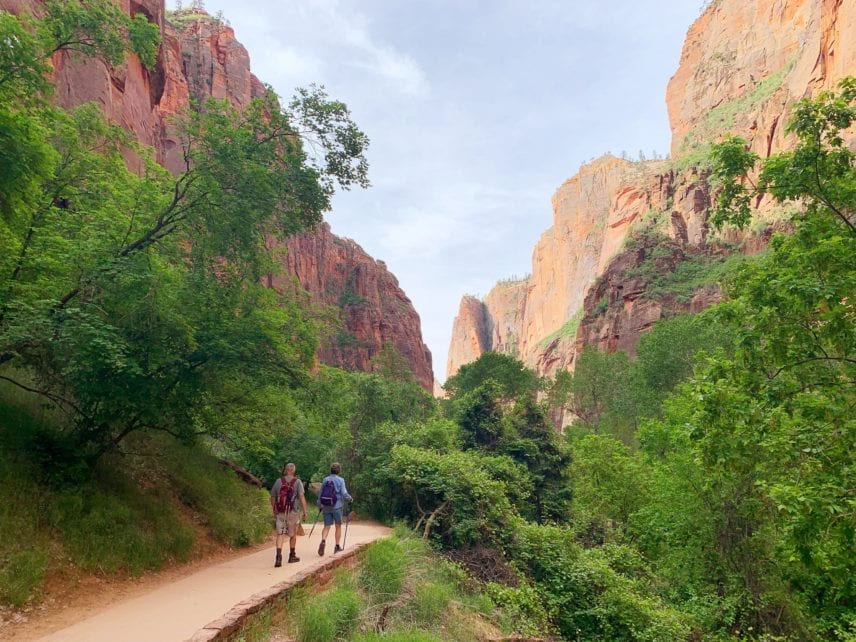
Highlights
- Weeping Rock: This is an easy walk up to dripping springs that have created hanging gardens over the years. You also have views of Angels Landing and Big Bend, as well as access to the Hidden Canyon and Observation Point Trails.
- Court of the Patriarchs: This may be a minor stop, but the rock formations known as the Patriarchs have been important to visitors since the beginning of human history here. At this stop you can make the short walk up to enjoy views of Abraham, Isaac and Jacob Peaks, Mount Moroni and The Sentinel.
- Temple of Sinawava: This is the last stop on the shuttle system and also where hikers can access The Narrows. It’s a well-maintained paved walk down to the Narrows, which makes this a popular and incredibly scenic short hike.
- Pa’rus Trail: This is an easy hike and was one of my favorites from my time in Zion. It starts at either shuttle stop 1 or 3 and is 3.5 miles round trip, although I just did it one way from the Human History Museum back to the Visitor’s Center. It’s a paved trail that follows the Virgin River and is the only trail in the park that allows bikes and leashed dogs. It also features some incredible views, especially of The Watchman, and I strongly recommend adding this one to your to-do list.
- Angels Landing via West Rim Trail: Although this is a very popular hike, it’s also one of the most strenuous in the park. Zion defines strenuous not only in terms of length (it’s 5.4 miles round trip) or climbing, but mentally difficult as well. A trail like this one requires planning and ensuring you have everything you need, like water, before starting. Angels Landing though is so popular thanks to the incredible views at the end. The trail follows the narrow spine to the final viewpoint roughly 1500 feet above the canyon floor. Given the long drops, this is not recommended for kids or anyone with a fear of heights, which is one reason of many why I didn’t even try this one.

Where to Stay
SpringHill Suites Springdale Zion National Park: Designed to blend in with the red rocks of the area, the SpringHill Suites in Springdale is the ideal home for your visit to Zion. It’s in the heart of Springdale, which means almost everything is walkable and there’s even a shuttle stop for Zion right in front. Add in the spacious rooms and incredible service for which SpringHill Suites are so well known, and this is a hotel that’s hard to beat.
Fairfield Inn & Suites Virgin Zion National Park: When visiting Zion, I actually stayed in nearby Virgin, Utah at a very brand new Fairfield Inn & Suites. When I say brand new, I mean it – you can practically still smell the paint and I loved it. Since it was just opened, this property has all of the modern conveniences in a setting that is peaceful and breathtaking. The common areas are large and comfortable and there’s even a pool area so you can relax after a long day of adventuring. This was a welcome haven for me and I loved every second of staying there.

To learn more about Utah’s Mighty Five National Parks, please be sure to listen to the episode of the Explore the World Travel Podcast I devoted to them.
